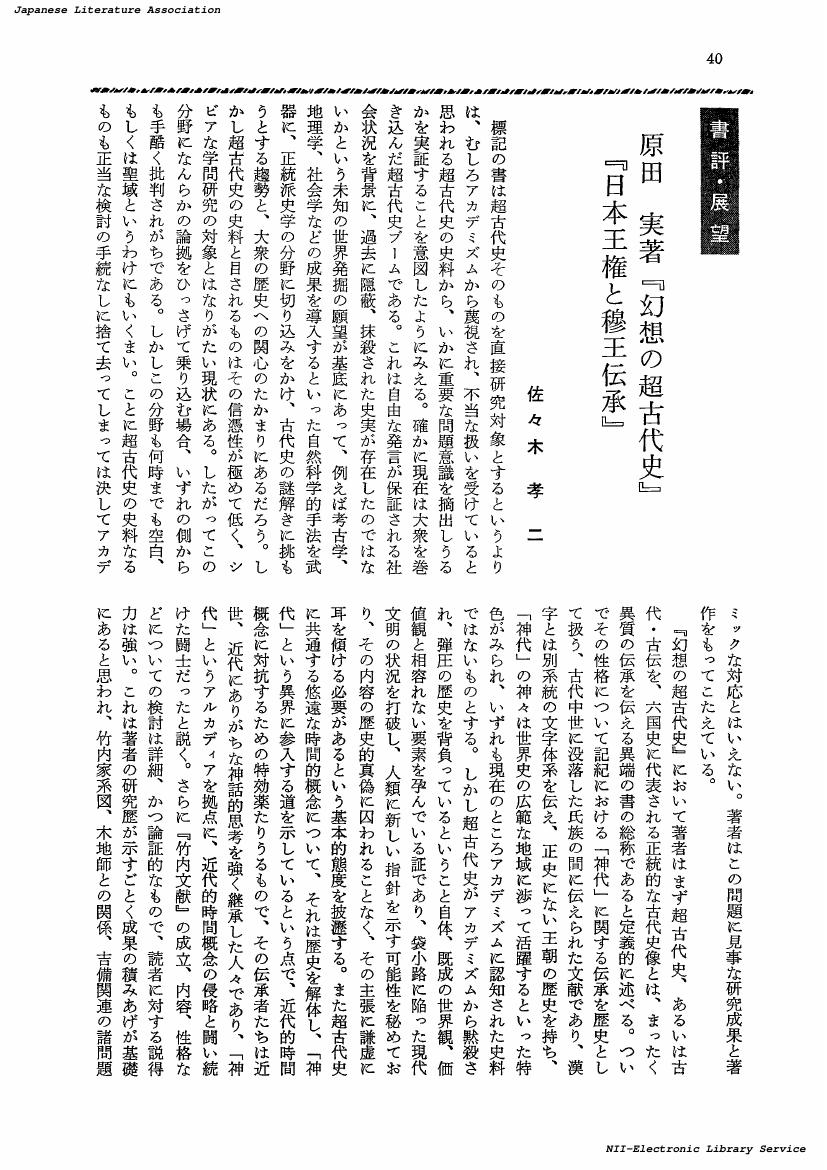19 0 0 0 OA 原田実著, 『幻想の超古代史』, 一九八九年一一月一〇日, 批評社刊, 二七七頁, 二四〇〇円 / 原田実著, 『日本王権と穆王伝承』, 一九九〇年七月二五日, 批評社刊, 二四八頁, 二四〇〇円
- 著者
- 佐々木 孝二
- 出版者
- 日本文学協会
- 雑誌
- 日本文学 (ISSN:03869903)
- 巻号頁・発行日
- vol.40, no.7, pp.40-41, 1991-07-10 (Released:2017-08-01)
2 0 0 0 OA 東日流の語部伝承の形成
- 著者
- 佐々木 孝二
- 出版者
- 日本文学協会
- 雑誌
- 日本文学 (ISSN:03869903)
- 巻号頁・発行日
- vol.32, no.9, pp.11-21, 1983-09-10 (Released:2017-08-01)
I discussed the relationships of the transmitted stories and the historical facts, besides the purposes and the elements of transmission, based on "kataribe" (a family of professional narrators) and the transmittedstories in Tsugaru-Soto-Sangunshi. The Ando Family, who were natures of Tosaminato in Mutsu, tried to justi- fy their right to rule over the region called Tsugaru. So they made transmitted stories of their own family based on history books, old documents and the family stories which were handed down generation to generation, giving them other interpretations, adding something different and even inventing new stories. They took a group of "kataribe" under their influences so as to supervise them with certain financial aids and have them transmit the story of the Ando. I analyzed these facts and the circulation process of the basic culture and its deformation after the Tsugaru fashion.
1 0 0 0 OA 中世の物語と地方の伝承 : 霊の語りと虚構の視点(<特集>中世 説話と物語)
- 著者
- 佐々木 孝二
- 出版者
- 日本文学協会
- 雑誌
- 日本文学 (ISSN:03869903)
- 巻号頁・発行日
- vol.33, no.4, pp.1-12, 1984-04-10 (Released:2017-08-01)
The outstanding characteristics of the medieval stories are that they were regarded as the narratives told by the spirits of the dead and that they served as requiems. So in spite of being fiction, they have a close connection with historical realities. And the narratives were transmitted mostly by psychic medi-ums who belonged to the low class and had close relationships with the rural people. The transmitters picked up a lot of rural legends and drew them into their narratives, as well as spreading the stories to many districts. I've discussed these characteristics of the medieval narratives through a couple of stories which have something to do with the transmission in the nor-thern part of Ou district.
